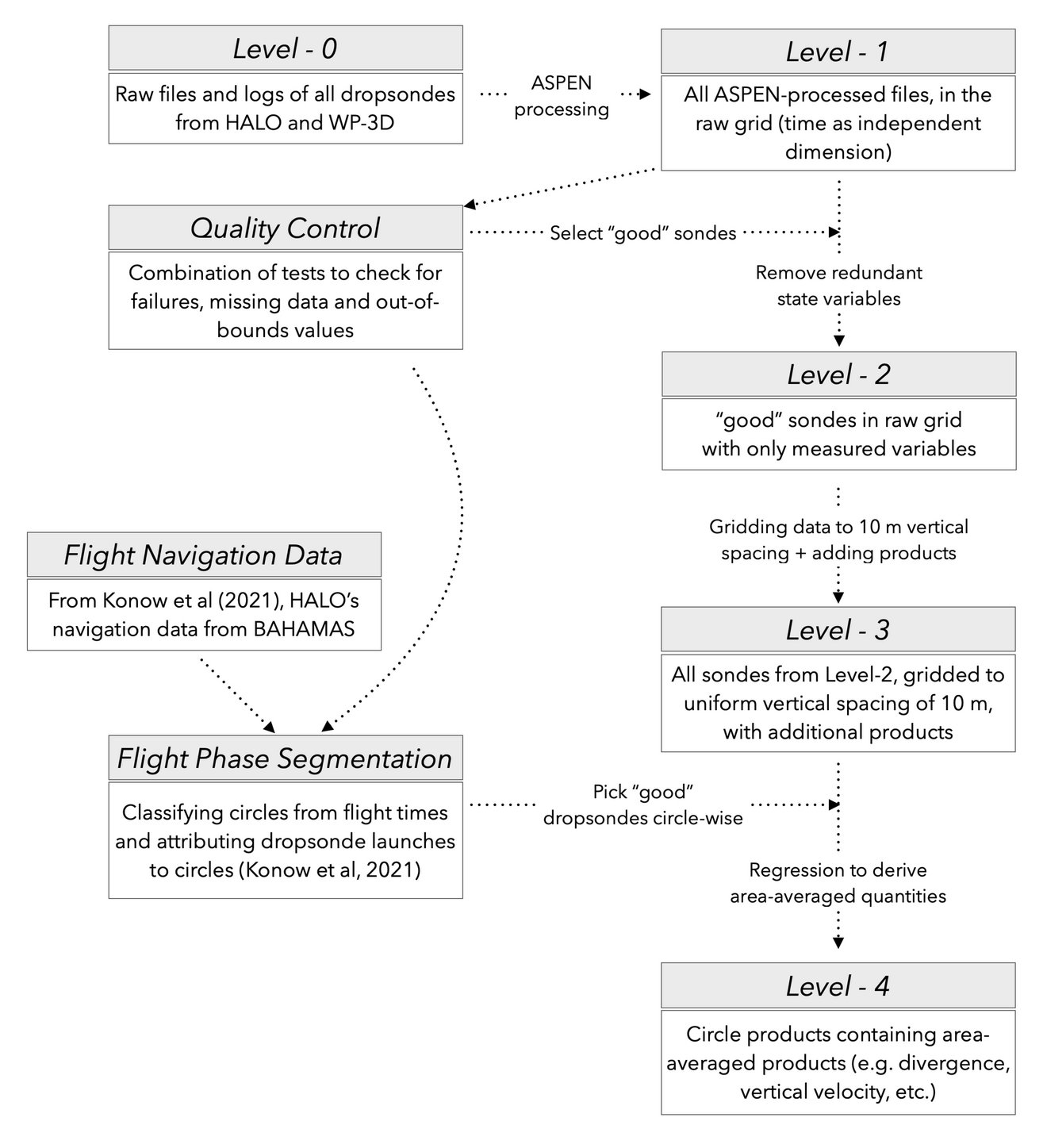Atmospheric data treasure for the trade wind region collected, processed, and made available
A dropsonde is a device dropped from aircraft to obtain a vertical profile, or “sounding”, of atmospheric properties. It measures location using global navigation systems (such as GPS), from which it derives the wind speed and direction while measuring temperature, pressure and humidity. It can be used to collect in-situ data from remote regions and to understand atmospheric processes and changes.
Dr. George and his colleagues used these data to create JOANNE, a recently released dataset containing the dropsonde measurements from the EUREC4A field campaign. JOANNE is the largest repository of dropsonde measurements with uniformly gridded products. Using one common vertical grid for all data makes it easier for the scientists to use the soundings for different analyses. The data is processed in a way that allows it to characterize both horizontal and vertical variability of the atmosphere, and is the only data set of its kind. It is made publicly available at AERIS and includes measurements from the 1215 dropsonde launches that were made from the HALO and WP-3D (“Miss Piggy”) research aircraft as part of EUREC4A.
How the data was collected
The sounding strategy for EUREC4A was mainly designed by Prof. Bjorn Stevens (Max Planck Institute for Meteorology) and Dr. Sandrine Bony (Laboratoire de Météorologie Dynamique in Paris), and was a central aspect of HALO’s circular flight paths. This was adapted for the WP-3D by Dr. Robert Pincus and Dr. Chris Fairall through the NOAA funded ATOMIC campaign, one of several nationally funded components of EUREC4A. Along with circles, the aircraft also launched dropsondes along with AXBTs – devices providing vertical profiles of temperature in the upper ocean – at lower altitudes in “lawnmower patterns”. The JOANNE logo (see picture above) reflects the predominant flight paths of the aircraft and their respective schematics, along with the sketch of a dropsonde.
How the data is processed and presented
The dataset is presented in five levels (Level-0 to 4; see picture below), with each subsequent level involving a higher order of processing and product retrieval. The raw data collected by the dropsonde instruments are processed using state-of-the-art ASPEN software, and further passed through a stringent set of quality controls to classify the soundings as either good, bad or ugly. JOANNE also presents dropsonde data in a uniform vertical grid of 10 m spacing in Level-3. At the core of the EUREC4A field campaign are the mesoscale measurements of atmospheric circulation such as horizontal mass divergence, vertical velocity and pressure velocity and these are included in Level-4 of JOANNE.
How it is used
JOANNE’s immediate applications are primarily in helping with the calibration and processing of data from other instruments deployed during EUREC4A. Several studies have already been using the dataset and based on that, products from Level-3 seem to be a crowd favorite. Other applications include estimating the atmospheric radiative profile and understanding influences of cold pools, which are small-scale areas of evaporatively cooled downdraft air that spread as they impinge upon the surface underneath precipitating clouds. An especially exciting aspect is the availability of area-averaged gradients in Level-4. They come with the promise of a better insight into mesoscale circulation as well as more accurate forcings for limited-area models – both of which can contribute immensely to understanding clouds and atmospheric processes in the trades.
Original publication:
George, G., Stevens, B., Bony, S., Pincus, R., Fairall, C., Schulz, H., Kölling, T., Kalen, Q. T., Klingebiel, M., Konow, H., Lundry, A., Prange, M., and Radtke, J.: JOANNE: Joint dropsonde Observations of the Atmosphere in tropical North atlaNtic meso-scale Environments, Earth Syst. Sci. Data, 13, 5253–5272, https://essd.copernicus.org/articles/13/5253/2021/essd-13-5253-2021.html, 2021.
Contact:
Dr. Geet George
Max Planck Institute for Meteorology
Email: geet.george@mpimet.mpg.de

